The board wobbles again. I drop back into a kneeling position and shake my head ruefully at Adam, the instructor. Even standing up from the ground on dry land is quite a business these days; I am not at all confident I can do it on the water. Paddleboarding (SUP) is one of the world’s fastest growing water sports and so – perhaps unwisely – I’ve decided to give it a go.
I’m taking part in a paddleboarding picnic (or SUP-nic) off the coast of Bangor in Northern Ireland, an easy 40-minute coastal train ride eastwards from Belfast (£6, translink.co.uk). The better-known Antrim coast regularly attracts tourists, but less-visited north Down has a craggy green shoreline, sandy coves, lovely towns and frequent trains. Rows of candy-coloured houses line Bangor Bay and, a few inches from my board, a scornful cormorant dives gracefully underwater.
“Don’t worry. Take your time,” Adam reassures me. My knees are getting uncomfortable; I make one more attempt and suddenly I’m standing on what turns out to be a remarkably stable surface and paddling freely towards open water. A seal is playing in the waves ahead and a sailing boat drifts on the horizon.
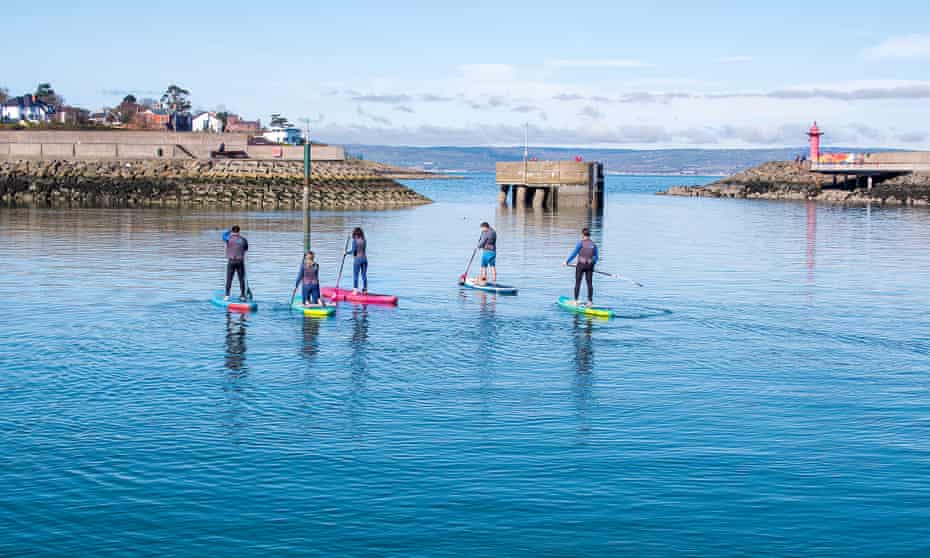
Brunch includes thick smoothie bowls, topped with passion fruit, banana, homemade granola and peanut butter (£6.95), from the Bearded Goat, a Bangor cafe that opened a year ago. Iain McCarthy, who founded Bangor’s SUP Hub in 2019, is constantly dreaming up new local partnerships and things that can be done on the water: yoga, mindfulness, poetry workshops, karaoke (two-hour paddleboarding lesson £40).
Silent and close to coastal wildlife, SUP is also great for birdwatching. Black guillemots, with their distinctive scarlet legs, are common enough locally to be nicknamed Bangor penguins. They nest in holes in the marina wall and I watch them dive and swim under the glassy surface of the water.
In the afternoon, I wander 10 minutes uphill from the harbour to the free North Down museum, with its bronze age swords and model of Bangor Castle in sugar cubes. Nearby, through redwoods and rhododendrons, is a restored walled garden (free). Roses and clematis clamber over arches leading to a fountain in the middle and each quarter has a different atmosphere: in one, a herb-ringed orchard drops red apples into fading marigolds and cornflowers. In another, there are clipped box trees and formal beds of snapdragons; a third has banks of scented sweet peas, striped yellow squashes, vivid green and crimson chard and peaches ripening behind glass.
Back down on the seafront, I find pop-up studios and new street art. Just next to the marina, with its clocktower and swan-shaped fun park pedalos, I am staying at the Salty Dog (doubles from £99 B&B). My bedroom has a sea view that fills the big bay window and a jar of homemade biscuits. I sit in one of the armchairs watching the sun set over Belfast Lough. After dark, I can hear waves on the rocks outside and see winking streetlamps and a pulsing lighthouse on the Antrim side of the water. In the bistro downstairs, I eat caramelised scallops with cauliflower in a nutty, herby oil and – next morning – a bowl of berries with yoghurt from the cows on the Clandeboye estate three miles away.
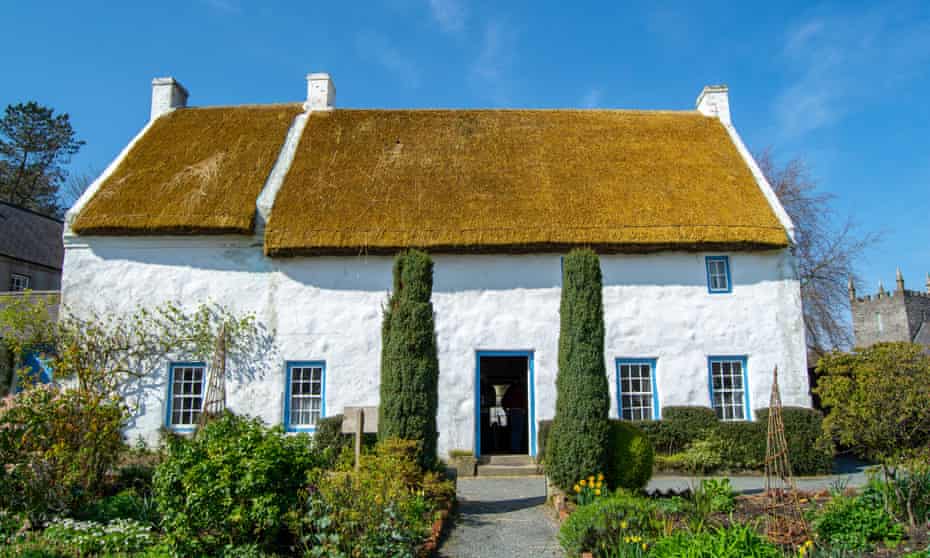
Two yellow shipbuilding gantry cranes have towered over Belfast’s cityscape since 1969 and 1974. They make an impressive start to next day’s sightseeing after a 30-minute train journey from Bangor. Known as Samson and Goliath, they are currently surrounded by a huge building site so I get a good look from every angle as I walk into the gleaming Titanic Quarter, Northern Ireland’s biggest regeneration project.
RMS Titanic was designed and built here and set sail in 1912. Now, thousands of aluminium shards glint in the sudden sunshine on the walls of a huge 2012 museum dedicated to Titanic’s engineering, construction, icy fate and aftermath (£19.50 adult/£8.75 child, titanicbelfast.com). Among the state-of-the-art exhibits, there’s a flying ride through the deafening shipyard, Edwardian street scenes, interactive displays about rivets, and a wall of rusted steel in the atrium that helps conjure the ship’s current state, 2½ miles under the sea.
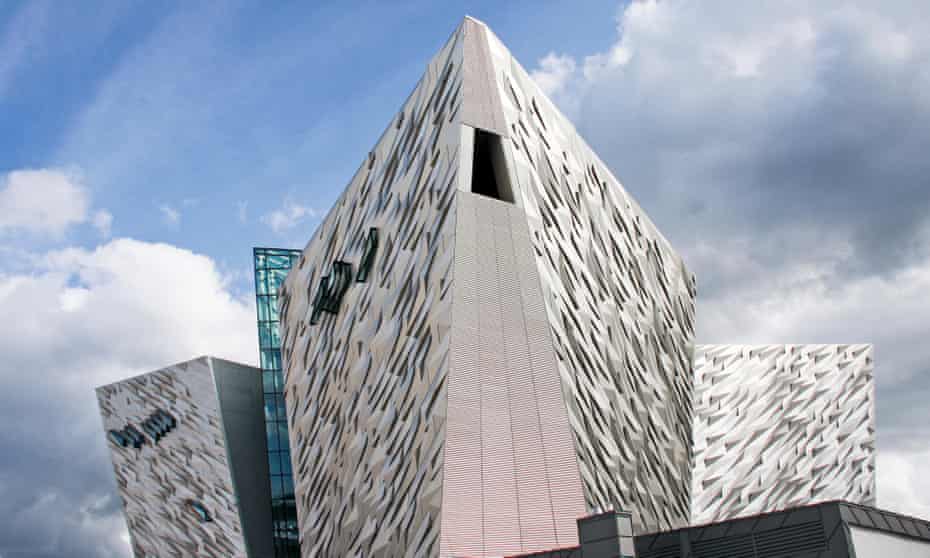
There is a poignant salvaged hot-water bottle, as well as a soup tureen and porthole, from Titanic at the Ulster Transport Museum (£7.88/£4.81 for adults/children), 10 minutes on the train back towards Bangor. This massive collection of trams, steam trains and schooners by Cultra station opened a new Museum of Innovation gallery this summer, which houses an original DeLorean sports car of Back to the Future fame.
Over a bridge and 10 minutes’ walk up a wooded drive, the Ulster Folk Museum (£7.88/£4.81) sprawls from a smart town square out into hilly fields of sheep and barns full of newly weaned piglets. Almost every house and garden can be visited. There are cockerels scratching under currant bushes outside the Coshkib hill farm and soda bread is crisping over an aromatic turf fire in the thatched rectory. The costumed staff, knitting by the fire, serving in the sweet shop or threading an old loom, are so relaxed and natural that I see two kids picking blackberries and wonder for a minute if they are volunteers or visitors.
Each of these museums is designed to provide a full day’s family entertainment, so by the time I’ve visited all three I’m suffering a severe case of museum legs. But the coast path beckons, so I get off at Helen’s Bay and follow the stream through the deep, ferny ravine of Crawfordsburn country park down to the sea, and turn right beside the beach for three miles on the North Down coastal path.
It was spring last time I walked this stretch of coast. Bluebells and wild garlic were spilling down through the waterside woods to low cliffs covered in sea pinks. Now, the hedges are tasselled with fuchsia and there are swathes of orange montbretia on the grassy headlands, but the beech leaves are yellowing and the flowers giving way to sloes and rosehips. Arriving in Bangor, foot-sore and hungry, but elated, I tuck into three courses at Underground Dining, memorably kicked off by a cone of crispy fish skin poppadums with salt-and-vinegar fries (£3.50).
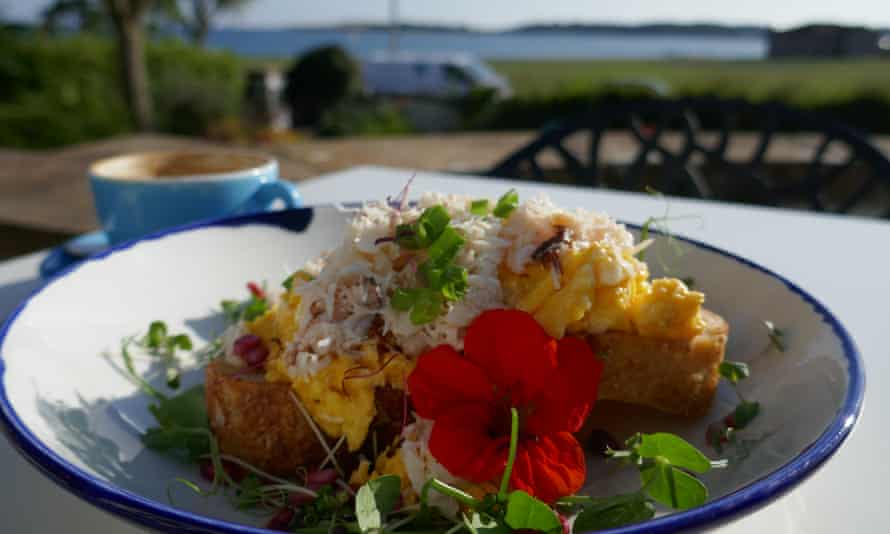
On my last morning I stroll through Bangor’s colourful terraces to Ballyholme Beach for a swim. Coffee afterwards at the Starfish cafe comes with views past the garden palm trees to the bay, sheltered by the green arm of Ballymacormick Point, where the coast path continues. For brunch, I have Copeland Island crab and savoury scrambled egg, piled on griddled sourdough with pea shoots, spring onions, edible flowers and a little bowl of chilli jam (£6.75). It’s pretty much perfect.
The Starfish is popular and the nearby esplanade draws joggers and dog-walkers out into the sunshine, but the beach is almost empty. From the train back to Belfast later, the blue-green views are more appealing than ever. Each little halt, with its gabled station house or bright tubs of flowers, looks tempting. I hop off at Holywood, where the High Street is lined with indie shops and cafes. People are drinking alfresco espressos and the Secret Market has purple cauliflowers, local beetroot and September strawberries from Armagh.
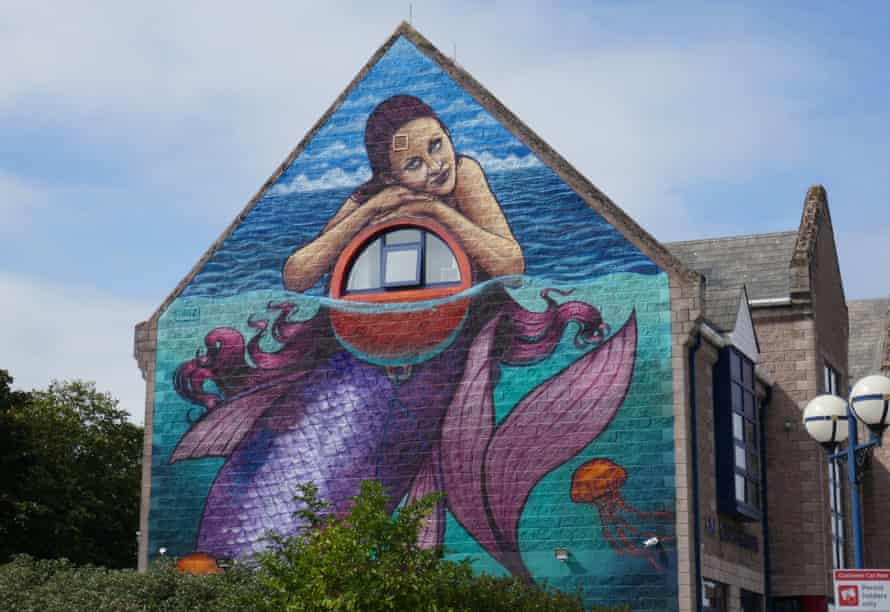
I take a cone of Morelli’s lemon sorbet under the subway to the waterfront to say goodbye to the sea. The Belfast hills roll along the horizon with Cave Hill, craggy and magnificent, in the middle. On the near shore, squeaking black and white oystercatchers chase each other through the waves, their long orange beaks like carrot noses on snowmen, and a leisurely, curve-billed curlew digs deep into the sand. On the water between distant hills and rocky foreshore, a paddleboarder glides serenely over the lough.





